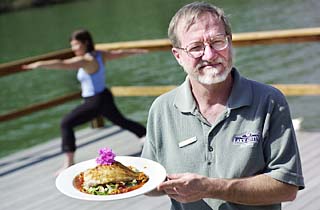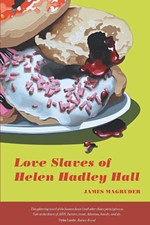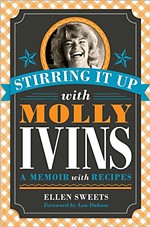His Whole Life
How Terry Conlan rose to the top without losing his perspective and priorities
By Barbara Chisholm, Fri., March 21, 2003

When we consider climbing to the top of a profession, the image that frequently comes to mind is clawing, or scaling mighty heights. The accompanying fallout includes, in this clichéd scenario, ruthless crushing of competitors and even friends, single-minded, laser-sharp focus on the prize, and the sacrifice of personal relationships. That's certainly one way to do it, and scores of professionally successful, personally disdainful people are proof. Another, less brutal way has been carved out by Terry Conlan, celebrated chef at Lake Austin Spa and Resort.
The rise of the Spa, which is ranked the No. 5 U.S. spa by the 2003 Zagat Survey as well as No. 4 Texas hotel and No. 1 Austin hotel, has catapulted Conlan to the top of the spa food chain. His ascension was of a decidedly different nature than the brutal path one might envision. Conlan, a hard-working gentleman in every sense, did it by keeping his eye on a bigger prize: a satisfying, balanced whole life.
Conlan has been a professional in the food business for more than 25 years. He came to the business by way of "chromosomal defect. I can't imagine why anybody else would go into the food business." He grew up in Dallas in a typical suburban household that had more than a passing acquaintance with canned vegetables and TV dinners. He came to Austin in the late Sixties to go to school, and like so many others, never wanted to leave again. During his years at UT, where he majored alternately in English and drama (playwriting), he became the roommate responsible for cooking by default.
"That's really how it started; I became the roommate chosen to cook, and so off to Kash Karry I'd go and start buying things and cooking things from scratch." He met and married his wife, a grad student who was a bit more focused professionally. Like a good liberal/borderline hippie, she went to work for the state as a social worker, and Conlan realized he needed to make a living himself somehow. "And I thought: 'This food thing. I really like doing it, my friends say I'm good at it. Where can I get an education doing it?' I started looking around, researching what I could do formally. At that point, the two options were the CIA [Culinary Institute of America], which was just starting to spread its wings. And even then, we're talking 1970 maybe, it was $10,000 a year and in Hyde Park, New York. That just wasn't going to happen. The next choice was Del Mar Junior College in Corpus Christi, [which] had a hospitality program. And there was nothing in between."
Clearly, his education was going to be OTJ. But where to get one? Like any novice, Conlan encountered the catch-22 of needing experience to get experience.
His break came when the official housekeeper of the LBJ White House returned to Austin and decided to open a restaurant. She opened a fairly large, New Orleans-style restaurant called Marco's. At the cattle-call hire, Conlan landed a job. He apprenticed under a grizzled old chef who was baffled by the college white boy who wanted to cook. Conlan was his assistant, and he obtained some practical, professional experience, not all of it useful -- such as the house technique for roux.
"He had a five-pound plastic bucket that was filled with a paste made with some unspeakable margarine, the cheapest margarine you can imagine, mixed with flour. He would come up with big handfuls of this stuff and make cheese soup, everything." At home he checked out half the cookbooks at the library and read them all, trying new techniques. Within six months, Conlan was the lead cook at night. "I had no business being the lead cook. It was out of necessity. I guess help was hard to find. Experienced help. I felt I was not prepared to do it, but I wasn't going to turn it down."
The birth of the Conlan's first child rearranged priorities, and he sought day work. The Galleria (on Kerbey Lane) was just opening, and rather than perusing Conlan's résumé, the owner asked him to cook a meal, to audition. He prepared a cold lemon soup, grilled shrimp with tarragon, pesto Genovese pasta, and dessert. He got the job, filling in at night for six weeks for the absent PM chef before assuming lunch responsibilities. Conlan's responsibility for the lunch menu was wide open, with the only caveat being it had to be vaguely European. "That was still probably the best job I've ever had in my life, to this day."
A second child came along around the same time the night chef left, and the sexier night job became available. Conlan wasn't interested. More pay was offered, but the lure wasn't even tempting. He found a friend to fill the nighttime position for about a year, but upon his departure he was told, "'Now, you are going to be the evening chef.'" A compromise was worked out wherein Conlan assumed responsibility for the whole kitchen, was in charge of all the hiring and all the menus, and he worked three nights and two days. This arrangement provided an extraordinary education, as Conlan could develop any menu he wished. He did a different five-course meal every week for three or four years, virtually without repeating.
The success of Galleria led to ambitions on the owner's part for an in-town series of soup-and-salad lunch joints. Soupery was born, with Conlan at the helm; at one time it had five locations throughout town. While the gastronomic returns were less satisfying, he was back on day shifts exclusively. The soup thing slacked off and eventually closed, and while Conlan was offered a job back at Galleria, he decided it was a good time to try something else. But that something else had to fit his priorities of allowing family time and some stability.
He became the manager of the UT Student Union, which at the time had ambitions to expand and become a public seated restaurant in addition to offering fast food downstairs. Meanwhile, Tortuga's restaurant, a business venture of Jeffrey Weinberg's (of Jeffrey's), was opening. They were seeking a kitchen manager, and Conlan was offered twice the money that UT paid. His stint there lasted several years, and that was where Conlan experienced his next big learning curve, discovering Diane Kennedy and Mexican and Caribbean cuisine. A change in management led to massive exits, but when Conlan left, he possessed a whole new set of skills.
It's hard to believe it now, but for a while he got out of the food business altogether; his kids were in school, and he wanted to participate in their rearing. He went into the plumbing business, but would scan the restaurant want ads weekly. When his second son obtained his driver's license, Conlan returned to his love when he answered an ad for the Spa. At that time it wasn't quite the posh destination it is now. It was making a transition from a boot-camp-style fat farm where people came to drop 20 pounds in a week, or something equally ludicrous. He was hired to make the food palatable, which proved to be surprisingly easy, since anything was an improvement on the austere and uninspired dreck served up previously.
Again, he found himself in a position to invent things as he went along, and his creativity in such an environment blossomed as he delved into the world of working within dietary parameters. It's a harmonious fit, for Conlan's life is all about balance and fulfillment, and the Spa world preaches the same sermon. In doing so, Conlan invented a lot, too.
"I know so little, really. That's the way I look at it. I've got an advantage over the other guy because I've been doing it. You pick up stuff constantly. I learn from everybody, but there's so much more that I don't know. There are so many more high-profile, really fabulous chefs out there that I admire a lot. Most of my inspiration comes not from the spa world at all, really. It's from those guys like Mario Battali, and those kind of guys that are really terrific that I steal from as much as I can and translate it into something that I do that's different. I mean, Food Arts magazine is probably my single biggest resource. I read that thing cover to cover. They don't have a lot of recipes, but lots of ideas, what guys are doing."
He makes notes on interesting menus longhand on yellow legal pads that are crammed with food combinations and dishes he's sampled or read about, and then tweaks them to fit the spa world. As a result, the Spa menu is indistinguishable from that of an upscale (though not stratospheric), sophisticated, contemporary restaurant.
The ownership of the Spa changed in 1997, and the new owners had big ideas for the previously midlevel, Austin-type (almost hippie) destination. Conlan was kept on and encouraged to take the cuisine as far as he wanted, and he's done just that. A recent lunch menu included specials like Eggplant Parmagiana with Mushroom Penne, Charcoal-Grilled Quail, Baked Redfish topped with a spinach, pecan, and parmesan stuffing with a hollandaise (!) sauce, plus the always available assortment of pizza, sophisticated burgers and sandwiches, and Southwestern items like compuestas, quesadillas, papacitas, etc. Dinner menus are even more ambitious, with items like Coriander-Crusted Venison with Zinfandel Syrup and Fresh Berries, and Pepper Bacon-Wrapped Halibut with a Romesco (almond and sweet red pepper) Sauce. This man never wants to hear the comment "Pretty good for spa food."
It's this level of dining that helped catapult the Spa to its current place atop vacation destinations and led to the recent publication of the gorgeous Fresh: Healthy Cooking and Living From Lake Austin Spa Resort cookbook (Favorite Recipes Press). It bears little resemblance to the typical "diet" cookbooks that generally range from the Dickensian (the kind compiled by austere dietitians with white lab coats and severe hairdos) to the merely dreadful (the Scarsdale Diet required a cupboard with copious amounts of instant bullion and artificial sweetener). Fresh has very little in common with these tomes. Featuring lavish photography shot on-site at the Spa, the cookbook offers recipes divided into appetizer, salads and dressings, soups, vegetarian, poultry, seafood, meats, and desserts categories. Staying true to its spa roots, the modest fat and calorie content of the dishes is spelled out along with other nutrient information. Staying true to its author's eclectic chef roots, the recipes are fresh, innovative, and satisfying, drawing influences from around the world. A familiarity of the book and its recipes quickly reveals a few techniques that can be used to adapt fatty recipes into less lethal versions. I've successfully used some of Conlan's techniques to create a more streamlined "fried" Eggplant Napoleon with a parmesan crust and other items that seem incongruous with low-fat cooking.
Conlan's reputation, plus the steep prices of the Spa (dining is open to Spa residents only), has also led to the popularity of his Central Market cooking classes, which are conducted once a month. "I've now taught more classes at Central Market than any person other than Roger Mollett, who's the resident chef. I've taught there basically once a month every month for six years." At the January class, we were treated to a feast of roasted garlic soup, hunter's salad, mushroom lasagna with fava coulis, braised chicken with red wine sauce, smoked salmon celery root gratin, and lemon pistachio crisp. Conlan was casual but never careless; he was interested in taking the mystery out of the food and wasn't at all interested in impressing anyone.
Both of the teaching and cookbook projects complement Conlan's creativity: He wrote the text of the book, which put his English major to good use, and at the classes he gets to generously share his love of cooking in a friendly, unpretentious manner. Meanwhile, he has a rich personal life that allows for a close-knit family, coaching championship Club soccer for 11- to 12-year-olds, and travel. "My wife and I have taken some really extensive road vacations [to] see America. I have a Saturn sitting out there that's probably on its last legs that's been as far south as Oaxaca as far Northwest as Vancouver Island, as far East as Quebec, as far Southeast as Savannah, Georgia and Florida, as far Southwest as San Diego. So we've seen a lot of the country and eaten in a lot of restaurants and I steal, steal, steal, steal." All this by taking the road less traveled, and rising, not clawing, to the top. ![]()








